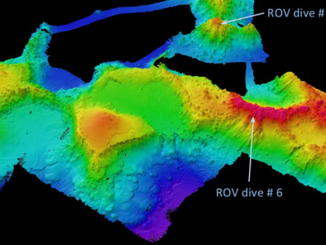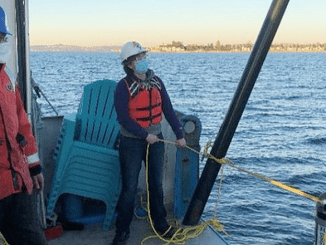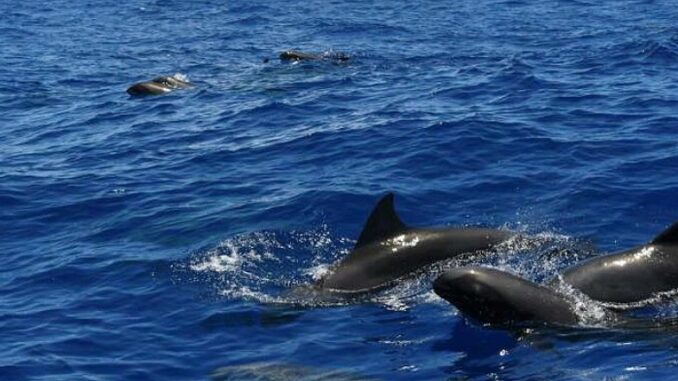
NEW YORK, New York, September 20, 2025 (ENS) – The High Seas Treaty has reached the 60 state ratifications needed to trigger its entry into force. Four new governments this week ratified the legally binding treaty at the United Nations – Sri Lanka, St. Vincent and the Grenadines, Sierra Leone and Morocco.
The treaty is the first legally-binding international agreement safeguarding marine life on the high seas, which cover two-thirds of the world’s oceans and play a critical role in ensuring a healthy planet.
Formally known as the Agreement under the United Nations Convention on the Law of the Sea on the Conservation and Sustainable Use of Marine Biological Diversity of Areas Beyond National Jurisdiction, less formally as the BBNJ Agreement, the treaty will take effect 120 days from the 60th ratification, on January 17, 2026. A first Conference of Parties, COP1, will be held shortly thereafter.
“This historic moment is the culmination of years of dedication and global diplomacy by governments and stakeholders,” said Rebecca Hubbard, director of the nonprofit High Seas Alliance.
“The High Seas Treaty is a powerful testament to multilateralism- showing what the world can achieve when we come together for the common good for our ocean, which covers more than 70 percent of the planet. Today marks an important step when promises start becoming action,” Hubbard said.
The treaty provides new tools to halt biodiversity loss and ocean degradation through enabling the creation of marine protected areas, MPAs, in international waters and ensuring environmental impact assessments of planned human activities.
It will also boost equity for developing countries through increasing knowledge and technology access, strengthening capacity, and ensuring the equitable access and sharing of the benefits of marine genetic resources.
These provisions are vital to achieving climate and biodiversity global goals, including the Kunming-Montreal Global Biodiversity Framework 30×30 target to protect 30 percent of the planet’s land and ocean by 2030.
International talks on a treaty to govern the high seas beyond national jurisdictions began on a freezing February day in 2006 at UN Headquarters in New York City. President George W. Bush was facing death threats from Iraq’s Saddam Hussein, Beyonce’s “Check on It” topped the charts, and concern over damaging exploitation of the deep sea environment was growing.
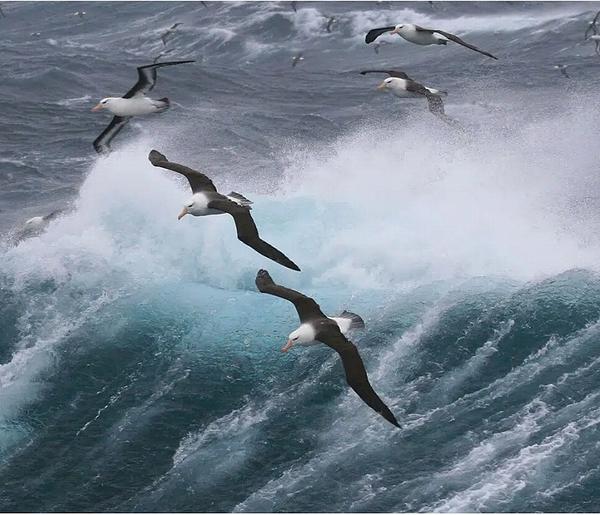
Today, as nations gather at UN Headquarters for the 80th anniversary of the UN General Assembly, the High Seas Treaty is a reality.
“The conservation and sustainable use of marine biodiversity in areas beyond national jurisdiction is increasingly attracting international attention, as scientific information, albeit insufficient, reveals the richness and vulnerability of such biodiversity, particularly in seamounts, hydrothermal vents and cold-water coral reefs, and concerns grow about the increasing anthropogenic pressure posed by existing and emerging activities, such as fishing and bioprospecting, in the deep sea,” the United Nations said in a statement ahead of the first High Seas Treaty Working Group meeting in 2006.
The treaty was formally adopted by UN member states in New York on June 19, 2023, and three months later 139 nations had signed it, according to the High Seas Alliance Ratification Tracker.
On September 9, when the 80th UN General Assembly opened in New York, 56 governments had ratified the treaty, just four short of the 60 needed for it to enter into force. On September 19, the four needed ratifications were filed.
To date, of the 197 UN Member Countries, 142 have signed it, 56 have ratified it, and 55 have taken no action as yet, according to the High Seas Alliance Ratification Tracker.
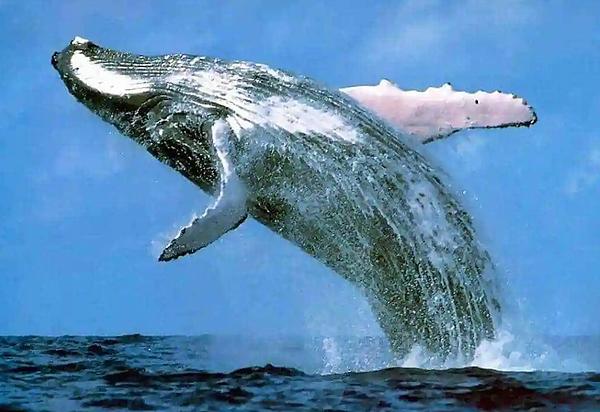
By the end of September, the BBNJ Agreement will have been open for signature for two years. After that, countries can join only by acceding to it.
To date, 143 countries have signed the treaty, but only 60 have completed the ratification process. The treaty is only binding for those countries that have formally ratified it.
In response to the 60th ratification, Chief Scientist Dr. Katie Matthews with the American nonprofit Oceana, said, “For too long, the high seas have been a Wild West – lacking comprehensive oversight. The ratification of the High Seas Treaty will help bring order. For the first time, we have the legal foundation to safeguard marine diversity in waters that belong to everyone and no one at the same time.”
“What matters now is turning paper into protection. Nations must move quickly from ratification to real-world implementation. If world leaders are serious about protecting 30 percent of the ocean by 2030, that requires ambitious action on the high seas,” Dr. Matthews said.
The U.S. Signed But Has Not Ratified
While the United States signed the High Seas Treaty in 2023 under President Joe Biden, the country has not yet ratified it. The Trump administration is not taking part in shaping the BBNJ, as it is more interested in intercepting illegal migrants and drugs on the high seas.
In the 1980s, President Ronald Reagan kept the United States out the United Nations Convention on the Law of the Sea, citing rules too prohibitive to deep-sea mining. As a result, for decades, U.S. companies have not pursued mining in international waters.
But that is changing. In April, the Metals Company USA LLC formally initiated a process with the National Ocean and Atmospheric Administration, NOAA, under the U.S. Department of Commerce to apply for exploration licenses and commercial recovery permits under existing U.S. legislation, the Deep Seabed Hard Mineral Resources Act of 1980.
“Our mission is to supply nickel, cobalt, copper, and manganese – metals vital for energy, defense, manufacturing, and infrastructure – while delivering net positive impacts on people and nature compared to conventional production routes. By tapping into a vast new supply of critical minerals, we are building the foundation today for tomorrow’s closed-loop system: a world where metals are used, recovered, and reused across generations,” The Metals Company says in a statement to investors on its website.
Chairman and CEO of The Metals Company Gerard Barron said the company has met with officials in the White House and U.S. Congress and “is encouraged by interest in the role deep-sea minerals can play in securing America’s supply chain.”
“We believe we have sufficient knowledge to get started and prove we can manage environmental risks,” Barron said.
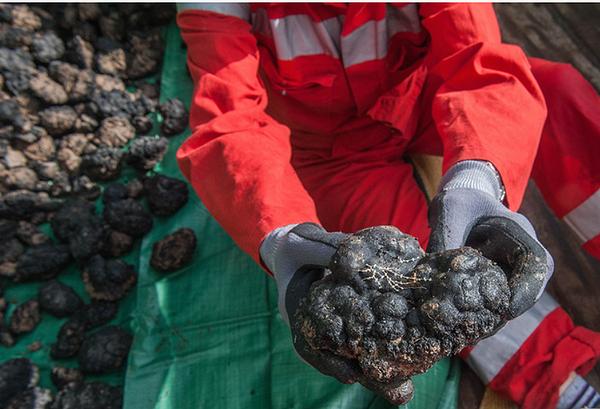
Other players interested in deep sea mining are on the move too.
President Donald Trump’s interest in gathering a U.S. stockpile of critical minerals from the seabed has taken a step forward now that the country of Bahrain has backed a California start-up.
According to a Financial Times report, Bahrain will sponsor Impossible Metals, a Silicon Valley start-up, to mine a mix of zones in the Pacific Ocean over nearly 75,000 square kilometers (29,000 square miles).
U.S. companies cannot directly obtain licenses through the Jamaica-based International Seabed Authority, the agency that regulates deep-sea mining in international waters.
The U.S. must seek sponsorship from other countries, which has often left American firms out as Chinese and Russian-backed ventures took the majority of licenses.
Deep Sea Mining Dangers
Deep-sea mining will stir up fine sediments on the seafloor, creating plumes of suspended particles. This is worsened by mining ships discharging waste water at the surface.
Scientists worry that these particles may disperse for hundreds of kilometers, take a long time to resettle on the seafloor, and affect ecosystems and commercially important or vulnerable species. Such plumes could smother animals, harm filter-feeding species, and block animals’ visual communication, according to the International Union for the Conservation of Nature, IUCN, in a 2022 issues brief.
Whales, tuna and sharks can be affected by noise, vibrations and light pollution caused by mining equipment and surface vessels, as well as by potential leaks and spills of fuel and toxic chemicals.
The deep seabed is the seabed at ocean depths greater than 200 meters, and covers about two-thirds of the total seafloor. Research suggests deep-sea mining could severely harm marine biodiversity and ecosystems, but we still lack the knowledge and means to implement protections, the IUCN warns.
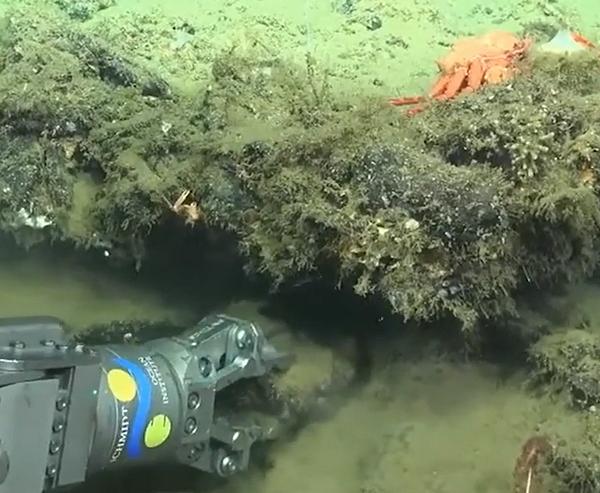
With only 0.9 percent of the High Seas currently fully or highly protected, the High Seas Treaty is crucial to expanding protection, establishing sanctuaries that help mitigate the climate crisis, and safeguarding food security for the billions who depend on ocean resources, the international nonprofit Greenpeace advises.
New analysis by Greenpeace International has revealed that to protect 30 percent of the high seas by 2030, governments would need to protect more than 12 million km2 (4.6 million square miles) every year for the next five years, an area is bigger than the size of Canada.
Mads Christensen, Executive Director, Greenpeace International said, “This is a landmark moment for protecting the ocean, and proof that countries can come together to protect our blue planet. The era of exploitation and destruction must end, and the Global Ocean Treaty is the tool to make that happen.”
“But we must not get complacent. Scientists are clear that we need to protect at least 30 percent of our ocean by 2030, and time is running out. Governments around the world must use this time now to ensure the first historic Ocean COP becomes a turning point, and start to develop plans for the first-ever sanctuaries under the treaty. Our ocean can’t wait and neither can we,” Christensen said.
Despite the move for urgent high seas conservation, there is growing interest in the mineral deposits of the seabed. Demand for copper, nickel, aluminum, manganese, zinc, lithium and cobalt is increasing to produce technologies such as smartphones, wind turbines, solar panels and batteries, while terrestrial deposits are being mined out.
Entry Into Force
The UN General Assembly has opened its 80th session and is now preparing for a concentrated period of critical meetings known as the High-Level Week, scheduled from September 22-30.
No specific BBNJ meetings are planned during September 2025 at UN headquarters, but the High Seas Treaty will be open here for signatures and ratifications until September 20, 2025.
Multiple countries are expected to submit their final ratification instruments during the High-Level Week.
Meanwhile, preparations for its entry into force are underway. The second Preparatory Commission (PrepCom II) for the BBNJ Agreement was held at UN Headquarters from August 18 – 29 to focus on operationalizing the treaty and getting ready for its entry into force.
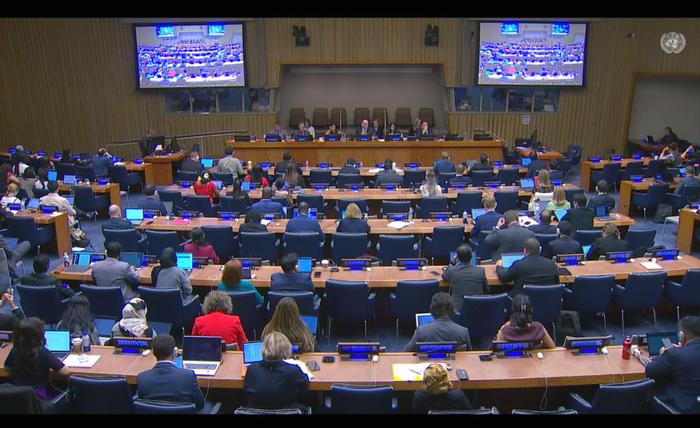
With the ocean experiencing severe and unprecedented threats, “the need for decisive and concerted action has never been more urgent. Now, with the real probability of the first Conference of the Parties to the Agreement convening in 2026, we are at a critical juncture,” Elinor Hammarskjöld, Under-Secretary-General for Legal Affairs and United Nations Legal Counsel, said.
Most delegates, despite individual concerns for their countries, were in support of the BBNJ Agreement at PrepCom II. But not the representative of the Russian Federation.
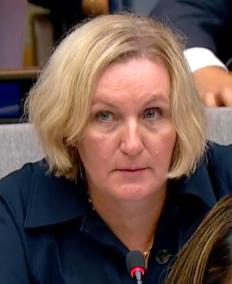
August 20, 2025 (Photo by IISD/ENB)
“For us, this Agreement is not acceptable at all. This is because it contains no checks and balances, and undermines the Convention on the Law of the Sea. Creating marine protected areas and other related instruments “is just another tool for intervention in internal affairs,” she said, adding that the Agreement is also damaging to States with claims for an extended continental shelf.
The Preparatory Commission is scheduled to hold a third session at the UN headquarters from March 23 to April 2, 2026, to continue planning for the treaty’s implementation.
Also called the BBNJ Agreement, or more formally, the Agreement exists under the United Nations Convention on the Law of the Sea on the Conservation and Sustainable Use of Marine Biological Diversity of Areas beyond National Jurisdiction.
The UN Convention on the Law of the Sea, or UNCLOS, entered into force on November 16, 1994. This treaty sets forth the rights and obligations of governments regarding the use of the oceans, their resources, and the protection of the marine and coastal environment. Although UNCLOS does not specifically mention marine biodiversity, it is commonly regarded as establishing the legal framework for all activities in the oceans, according to the UN.
Philippines Pristine Reefs Now a ‘Protected Seascape’
On August 29, the last day of the second Preparatory Commission meeting at the UN’s New York Headquarters, the Philippines officially declared the waters surrounding Panaon Island in Southern Leyte a Protected Seascape, preserving some of the most biodiverse coral reefs on the planet.
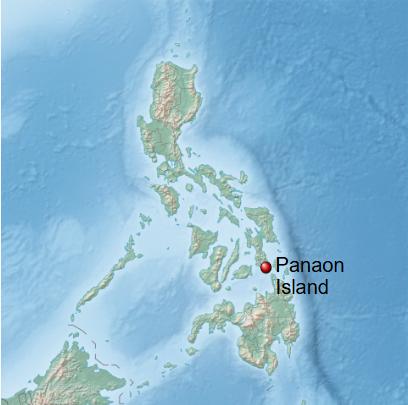
President Ferdinand Marcos Jr. signed into law the bill protecting more than 60,000 hectares of ocean, supporting local livelihoods, strengthening the country’s resilience to climate change, and moving the Philippines closer to its commitment to protect 30 percent of its lands and waters by 2030.
The oceans cover more than 70 percent of our planet, yet only about eight percent of them are currently protected, and far less are effectively protected.
“Protecting the Panaon Seascape is a global achievement in conserving a unique and vital ecosystem, while also securing the well-being of present and future generations,” said Von Hernandez, vice president in the Philippines with the U.S. nonprofit Oceana. “This is one of the rare places where coral reefs remain in excellent condition, and we now have a chance to keep them that way. This policy milestone defends marine biodiversity, enhances food security, and fights poverty.”
“Protecting the seas around Panaon Island helps us fishers greatly because, finally, there will be regular monitoring of our waters. This will likely increase our fish catch and boost our income since destructive fishing practices – especially from outsiders – will be controlled,” Valdemar Mercado Jr., a fisher and village leader in Benit, San Ricardo town told Oceana personnel.
Located in Southern Leyte within the Coral Triangle, Panaon Island has been globally recognized by the 50 Reefs Study, supported by Bloomberg Philanthropies, as part of a global portfolio of reefs most likely to survive the impacts of climate change.
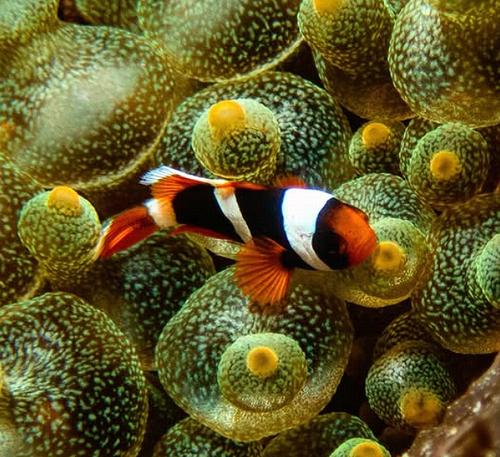
“The Philippines’ protection of Panaon Island’s waters and reefs offers a powerful example for how governments can turn commitments into real action,” said Antha Williams, who leads the Environment Program at Bloomberg Philanthropies. “By safeguarding one of the world’s most climate-resilient reef ecosystems, the country is supporting coastal livelihoods and making vital progress toward its 30×30 target. We’re proud to support efforts like the 50 Reefs Initiative, which make this progress possible and help shine light on unique habitats in need of preservation.”
The Philippines’ coral reefs have been declining over the last 40 years.
But in 2020, an Oceana-led expedition found Panaon Island was a unique exception with coral cover reaching three times the national average.
Over the course of the 21-day expedition, Oceana documented a wealth of marine life including whale sharks, sea turtles, and endangered Philippine ducks. The surrounding mangroves and seagrasses, which support food security, protect against storm surges, and store climate-saving blue carbon, were also in good condition. But alongside the signs of abundance, the team found troubling evidence of overfishing, destructive fishing, and plastic pollution.
“Panaon is situated in an area known as a vital corridor for marine mammals. Its waters are teeming with life and provide important breeding and nursery grounds for fish, allowing marine life and people to thrive,” Nikka Oquias, Oceana’s Marine Protected Area campaign lead, explained.
“With Panaon Island’s designation as a national protected area, communities and resource managers now have the needed legal framework and resources to strengthen the management and protection of this area. The law also contains a site-specific provision that requires the enactment of guidelines to regulate vessel speed and protect the large marine mammals frequently transiting the area,” Oquias said.
An Oceans Action Fund
The Commonwealth Secretariat, which oversees the voluntary association of 56 countries – home to 2.7 billion people over five continents, most with historic links to the United Kingdom – is committed to assisting its members in navigating the new treaty, both through ongoing research and through its BBNJ Agreement bilateral technical assistance program.
Dr. Daniel Wilde, Head of Oceans, and Dr. Jane Collins, Ocean Governance Adviser with the Commonwealth Secretariat said at the oceans conference in France in June, “The Apia Commonwealth Ocean Declaration, agreed to at the Commonwealth Heads of Government Meeting in Samoa last year, sounded a clarion call for the restoration and protection of the ocean. It demonstrated that our members countries are gravely concerned with the ocean facing a global emergency.”
“The BBNJ Agreement mandates an important principle: that the benefits associated with marine genetic resources should be fairly and equitably shared. But principles without implementation are just good intentions,” Wilde and Collins said, advocating a fund to get operations underway.
“So, the BBNJ Agreement goes a step further and seeks to operationalise this principle by providing for a special fund to share monetary benefits, and it lists possible charges – such as fees, royalties and profit shares – on the use of marine genetic resources. These charges can be used to raise revenues for this fund.”
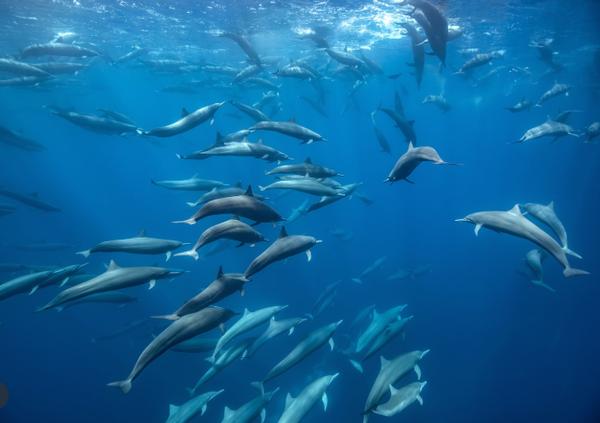
The treaty does not, however, mandate particular charges or provide details of how charges will work in practice, they said.
Ocean Action panels were featured in Nice, France, June 9 – 13, 2025 at the UN Conference to implement Sustainable Development Goal 14: Conserve and sustainably use the oceans, seas and marine resources for sustainable development.
Ocean Action panel 10 was a concept paper prepared by the Commonwealth Secretariat entitled, “Enhancing the conservation and sustainable use of oceans and their resources by implementing international law as reflected in the United Nations Convention on the Law of the Sea.”
First established at the 25th session of the Conference of the Parties to that Convention, the annual ocean and climate change dialogues provide a unique forum for enhancing collaboration by mobilizing all actors, improving understanding of the ocean-climate nexus and building ocean-based climate action.
In 2023, the fifth session of the Conference of the Parties to the United Nations Framework Convention on Climate Change, serving as the Meeting of the Parties to the Paris Agreement, encouraged further strengthening of ocean-based action.
The outcome of the first global stocktake under the Paris Agreement found that ecosystem-based approaches, including ocean-based adaptation and resilience measures, can reduce a range of climate change risks and provide multiple co-benefits, the Commonwealth Secretariat panelists pointed out.
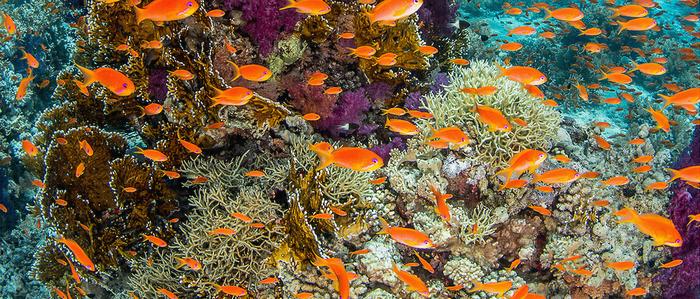
High Seas Treaty Funding Grows
Private Philanthropy:
A $51.7 million commitment from philanthropies like the Bezos Earth Fund and Bloomberg Philanthropies aims to accelerate the creation of High Seas MPAs.
Global Environment Facility (GEF):
The GEF allocated $34 million in its GEF-8 funding period (ending June 2026) to support developing countries in ratifying and implementing the BBNJ Agreement.
European Union (EU):
The EU pledged €40 million in mid-2025 towards its Global Ocean program to support developing countries in ratifying and implementing the High Seas Treaty.
Other Sources:
The Treaty’s financial mechanism also includes a voluntary trust fund to support developing states’ participation in meetings and a special fund for marine genetic resources, with broader funding options including contributions from States, international financial institutions, and other public and private entities.
Future funding may come from the levy of fees, royalties and profit shares on the use of marine genetic resources.
But the High Seas Treaty does not mandate particular charges or provide details of how charges will work in practice.
It is only funding that can will bring the fledgling treaty to life. It will be used for:
Ratification and Implementation: Providing support to developing nations to join and enact the treaty.
Capacity Building: Addressing capacity barriers at national and regional levels to ensure effective implementation of the agreement.
Marine Protected Areas (MPAs): Accelerating the creation of high-quality MPAs in the high seas.
Governance Processes: Establishing the necessary governance structures for the rapid adoption of high seas MPAs.
Oceans and Biodiversity: Two Agreements Working in Harmony
After nearly two decades of negotiations, the BBNJ Agreement was adopted by consensus on June 19, 2023 under the United Nations Convention on the Law of the Sea.
High Seas Treaty negotiators have been considering how the BBNJ Agreement can work in synergy with efforts undertaken by the UN Convention on Biological Diversity, including the Kunming-Montreal Global Biodiversity Framework.
Adopted by the Conference of the Parties to the Convention on Biological Diversity at its 15th meeting, in December 2022, the Kunming-Montreal Global Biodiversity Framework details 23 global targets for urgent action to halt and reverse biodiversity loss by 2030.
Targets 2 and 3 are particularly relevant. They are aimed at ensuring that by 2030 at least 30 percent of degraded marine and coastal ecosystems are under effective restoration, and at least 30 percent of marine and coastal areas are effectively conserved and managed.
With the expectation that the implementation of the Kunming-Montreal Global Biodiversity Framework and ratification of the BBNJ Agreement will soon come to fruition, stakeholders are becoming increasingly aware of the opportunities and challenges they may bring.
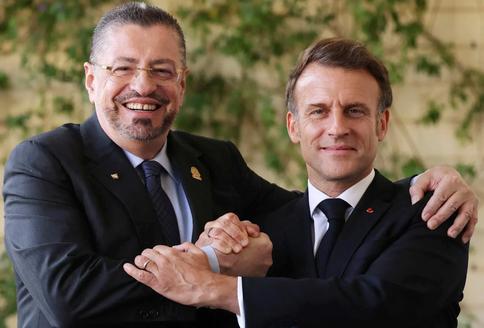
French President Emmanuel Macron, who hosted the UN ocean summit in Nice together with Costa Rican President Rodrigo Chaves Robles, expressed a forceful appeal for science, law, and multilateral resolve.
“The abyss is not for sale, any more than Greenland is for sale, any more than Antarctica or the high seas are for sale,” Macron declared. “If the Earth is warming, the ocean is boiling.”
He insisted the fate of the seas could not be left to markets or opinion. “The first response is therefore multilateralism,” the French leader said. “The climate, like biodiversity, is not a matter of opinion; it is a matter of scientifically established facts.”
President Chaves Robles told the conference delegates, “The ocean is speaking to us – with bleached coral reefs, with storms, with wounded mangroves,” he said. “There’s no time left for rhetoric. Now is the time to act.”
Featured image: On the high seas, melon-headed whales (Peponocephala electra) surface near the U.S. government ship Oscar Elton Sette. July 6, 2017 (Photo courtesy NOAA Fisheries)
© 2025, Environment News Service. All rights reserved. Content may be quoted only with proper attribution and a direct link to the original article. Full reproduction is prohibited.

